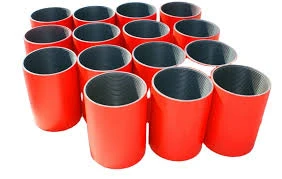- Afrikaans
- Albanian
- Amharic
- Arabic
- Armenian
- Azerbaijani
- Basque
- Belarusian
- Bengali
- Bosnian
- Bulgarian
- Catalan
- Cebuano
- Corsican
- Croatian
- Czech
- Danish
- Dutch
- English
- Esperanto
- Estonian
- Finnish
- French
- Frisian
- Galician
- Georgian
- German
- Greek
- Gujarati
- Haitian Creole
- hausa
- hawaiian
- Hebrew
- Hindi
- Miao
- Hungarian
- Icelandic
- igbo
- Indonesian
- irish
- Italian
- Japanese
- Javanese
- Kannada
- kazakh
- Khmer
- Rwandese
- Korean
- Kurdish
- Kyrgyz
- Lao
- Latin
- Latvian
- Lithuanian
- Luxembourgish
- Macedonian
- Malgashi
- Malay
- Malayalam
- Maltese
- Maori
- Marathi
- Mongolian
- Myanmar
- Nepali
- Norwegian
- Norwegian
- Occitan
- Pashto
- Persian
- Polish
- Portuguese
- Punjabi
- Romanian
- Russian
- Samoan
- Scottish Gaelic
- Serbian
- Sesotho
- Shona
- Sindhi
- Sinhala
- Slovak
- Slovenian
- Somali
- Spanish
- Sundanese
- Swahili
- Swedish
- Tagalog
- Tajik
- Tamil
- Tatar
- Telugu
- Thai
- Turkish
- Turkmen
- Ukrainian
- Urdu
- Uighur
- Uzbek
- Vietnamese
- Welsh
- Bantu
- Yiddish
- Yoruba
- Zulu
Connecting Irrigation Pipes Using Effective Coupling Techniques for Efficient Water Management
Understanding Irrigation Pipe Couplings Importance, Types, and Applications
Irrigation is a crucial aspect of modern agriculture, ensuring that crops receive the necessary water for optimal growth and yield. Central to an efficient irrigation system are the pipes and fittings that transport water from the source to the fields. Among these fittings, pipe couplings play a significant role in connecting sections of irrigation pipes, ensuring a seamless flow of water. In this article, we will explore the importance of irrigation pipe couplings, the different types available, and their applications in various irrigation systems.
The Importance of Pipe Couplings
Irrigation pipe couplings serve multiple vital functions. Primarily, they connect two lengths of pipe, enabling the extension of irrigation systems to cover larger areas and accommodate varying field sizes. Without proper couplings, the risks of leaks and water loss increase, which can ultimately lead to inefficient irrigation practices and wasted resources.
Moreover, pipe couplings contribute to the overall integrity of the irrigation system. Agriculture requires consistent and reliable water delivery, and couplings must withstand not only water pressure but also environmental factors such as temperature fluctuations, soil pressure, and potential physical damage from machinery or weather events.
Additionally, couplings facilitate maintenance and repair operations. Should a section of the piping system become damaged or corroded, couplings allow for easy disassembly and replacement of the affected pipe segment without the need to replace the entire system. This maintenance efficiency can save time, labor, and cost for farmers and irrigation managers.
Types of Irrigation Pipe Couplings
Understanding the different types of irrigation pipe couplings is essential for selecting the right one for specific applications
. Here are the most common types1. Slip Couplings These are used to connect two ends of pipes that are of the same diameter. Slip couplings simply slide over the ends of the pipes, creating a connection that allows for alignment and flexibility in the system.
irrigation pipe coupling

2. Threaded Couplings These couplings feature internal threads that screw onto the external threads of the pipe ends. This type provides a secure connection and is commonly used in PVC and metal pipes. Threaded couplings are ideal for systems where high pressure is expected.
3. Compression Couplings Designed for connecting pipes of different materials (like plastic to metal) or different diameters, compression couplings use a tightening mechanism to create a secure connection. They are particularly useful in retrofitting existing systems.
4. Flanged Couplings These couplings feature flat surfaces with holes that allow bolts to connect pipe sections securely. Commonly used in larger irrigation systems or industrial applications, flanged couplings can handle greater pressure and provide robust connections.
5. Barbed Couplings Typically utilized in flexible hose systems, barbed couplings have protrusions (barbs) that grip the inside of the hose for a tighter seal. They are often used in drip irrigation systems.
Applications in Irrigation Systems
The applications of pipe couplings are diverse and depend on the system type. Farmers utilize couplings in drip irrigation setups, which deliver water directly to the plant roots, as well as in sprinkler systems that cover larger areas. Couplings also play a role in the design of underground irrigation systems where connections need to remain secure and leak-free.
In addition, couplings are essential in modular irrigation systems that can be expanded or contracted based on crop needs. As agricultural practices continue to evolve, the adaptability and reliability of irrigation systems, facilitated by quality couplings, become increasingly important.
Conclusion
Irrigation pipe couplings are fundamental components of effective irrigation systems, facilitating water delivery while ensuring system integrity and ease of maintenance. By understanding the various types of couplings available and their specific applications, farmers and irrigation managers can make informed decisions that enhance the efficiency of their irrigation practices. As agricultural demands grow and climate change impacts water availability, the importance of a well-designed irrigation system will only continue to rise. Investing in quality irrigation pipe couplings is an investment in sustainable and productive farming.
-
Tubing Pup Joints: Essential Components for Oil and Gas OperationsNewsJul.10,2025
-
Pup Joints: Essential Components for Reliable Drilling OperationsNewsJul.10,2025
-
Pipe Couplings: Connecting Your World EfficientlyNewsJul.10,2025
-
Mastering Oilfield Operations with Quality Tubing and CasingNewsJul.10,2025
-
High-Quality Casing Couplings for Every NeedNewsJul.10,2025
-
Boost Your Drilling Efficiency with Premium Crossover Tools & Seating NipplesNewsJul.10,2025







